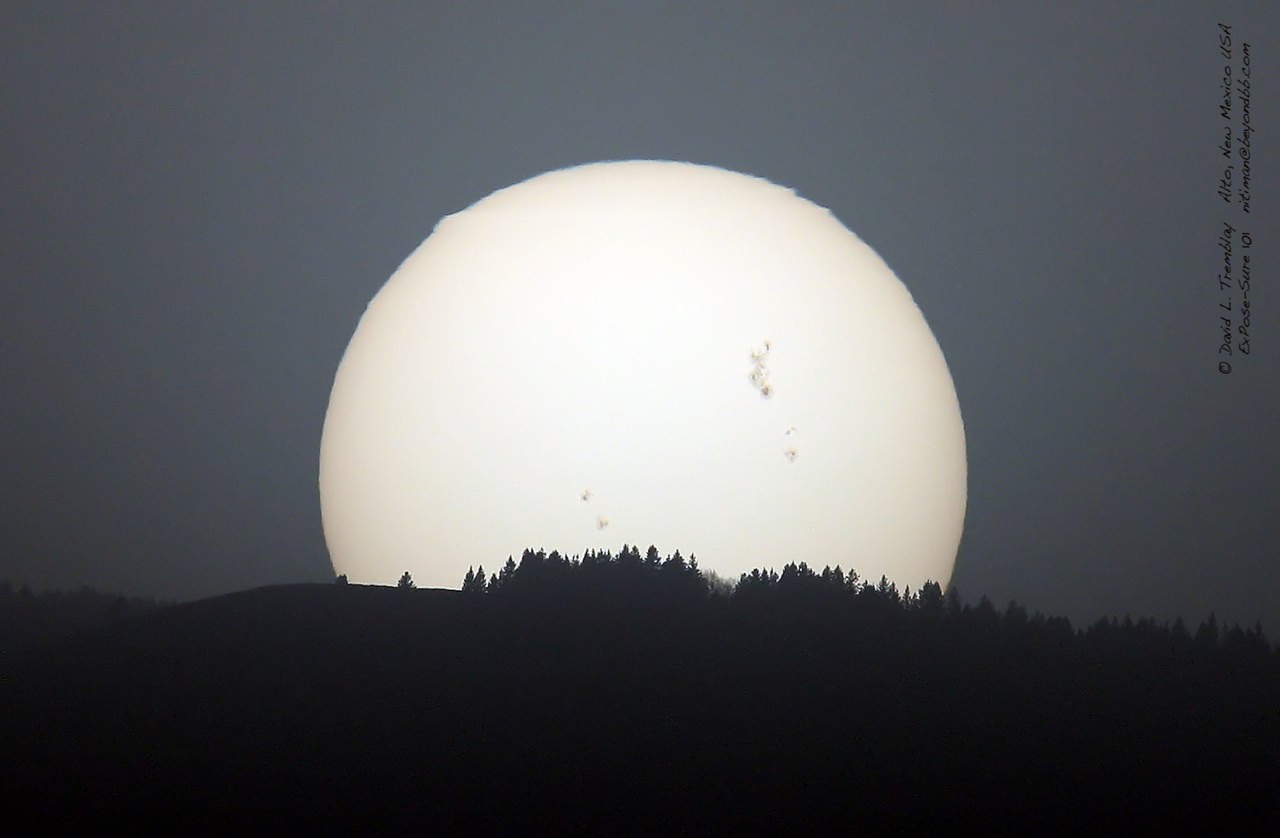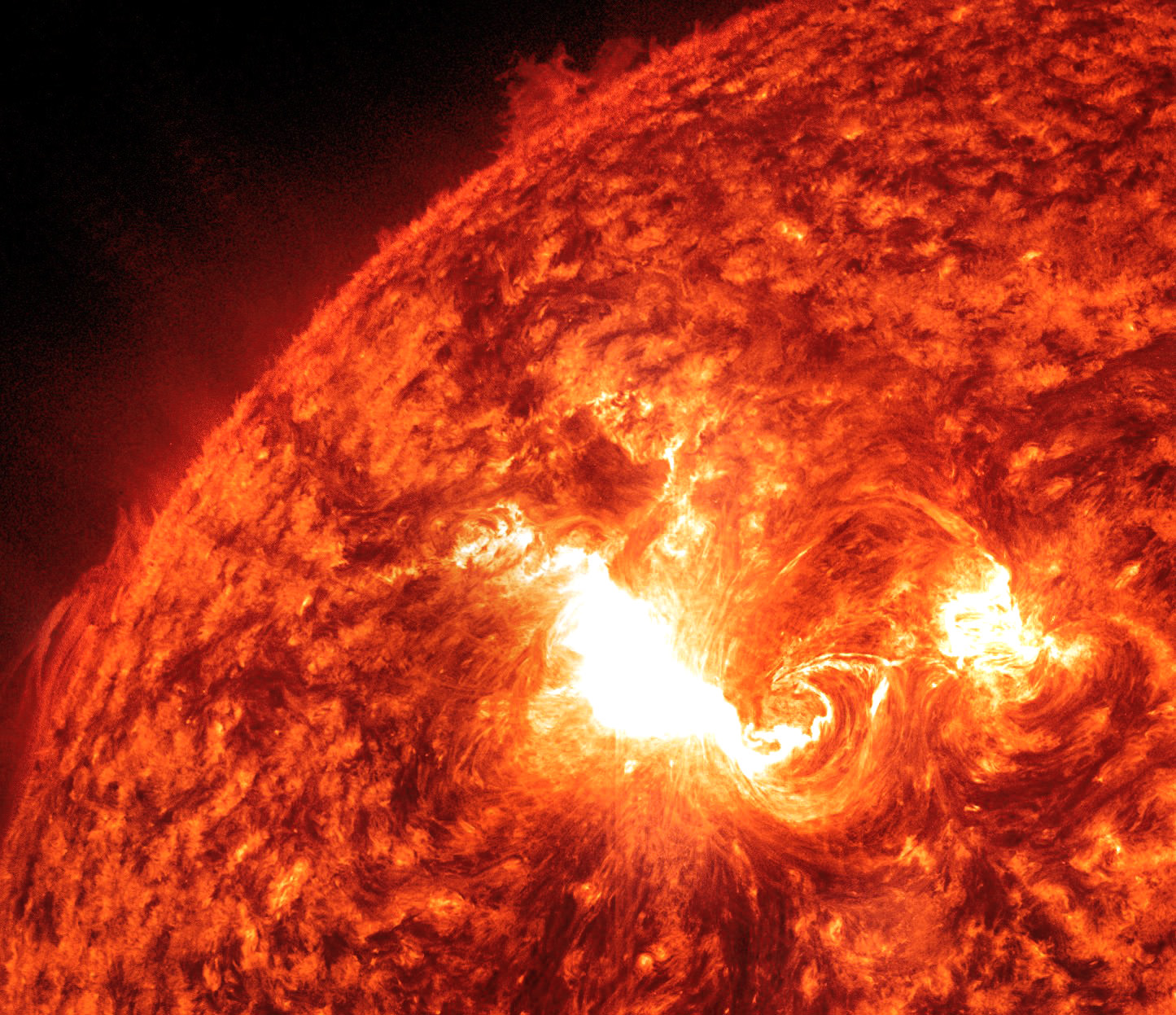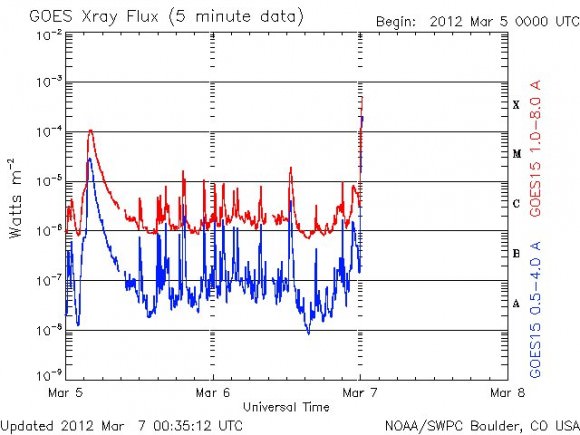[/caption]
The enormous sunspot region responsible for all the recent fuss and flares was easily visible from Earth yesterday… easily visible, that is, with the help of a natural filter provided by a New Mexico dust storm!
Photographer David Tremblay captured this image on March 7 through the dust-laden sky of Alto, New Mexico. Active Region 1429 can be seen on the upper right side of the Sun’s disk. Many times the size of Earth, this sunspot region has already erupted with several X-class solar flares and sent numerous CMEs our way — with potential for more to come!
“Blowing dust from the Tularosa Basin is so very dense that observing the sun was possible with the naked eye this evening,” noted David on SpaceWeather.com, where you can see more of his solar photos taken about the same time.
The image above was captured at 560mm with a Canon MKlll ESO1D.
View more of David’s photography here.
Image © David Tremblay. All rights reserved. Used with permission.



